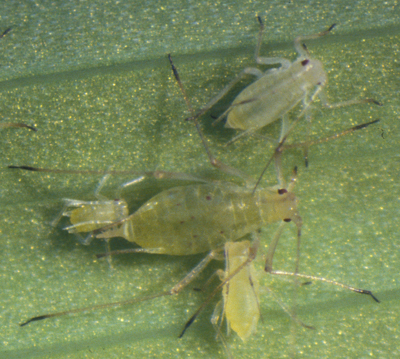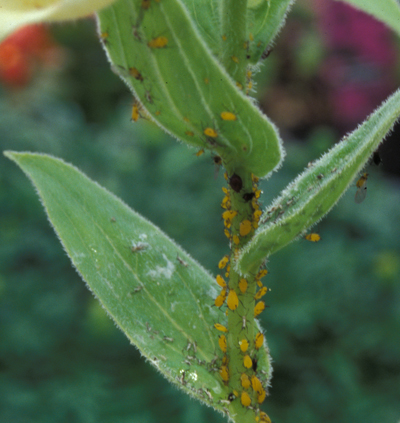Aphids
July 2, 2015
Sucking pests
Aphids use their piercing-sucking mouthparts to withdraw fluids from terminal growth and leaf undersides. This results in leaf curling or distortion. Aphids produce honeydew, a clear, sticky liquid. Aphids feeding on plants outdoors are susceptible to many beneficial insects (natural enemies), including parasitic wasps, ladybird beetles, green lace-wings and hover flies. Many species of aphids feed on a wide variety of herbaceous perennials.

Aphids are 1 to 3 mm long and pear-shaped, with two tubes (cornicles) projecting from the back of the abdomen. They vary in color, depending on the host plant fed upon, from black, brown, green, orange and red to yellow.
Management
A hard water spray will quickly remove aphids from plants and minimally affect any beneficial insects. Avoid over-fertilizing and overwatering plants. Remove weeds from adjacent areas – many weeds serve as a reservoir for aphids. Contact and systemic insecticides may be effective in controlling aphids

Aphids tend to feed on plants in large numbers.
Print a PDF of this page: Aphids



 Print
Print Email
Email